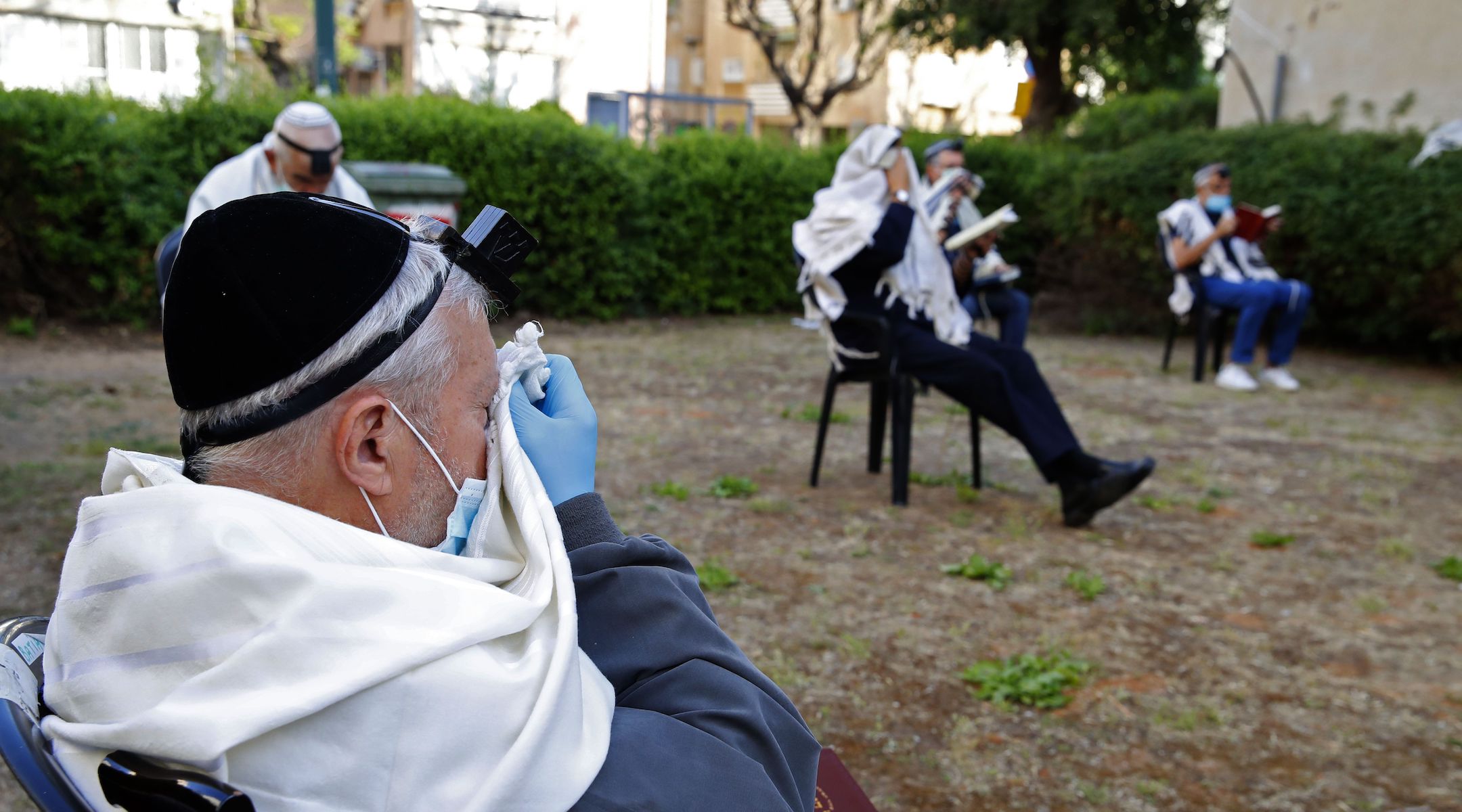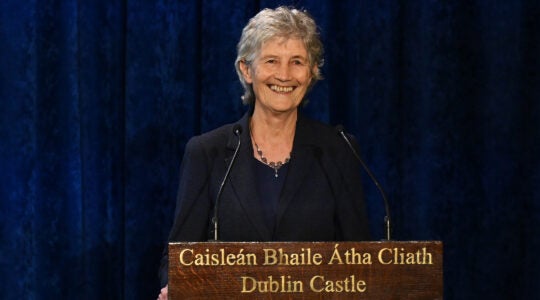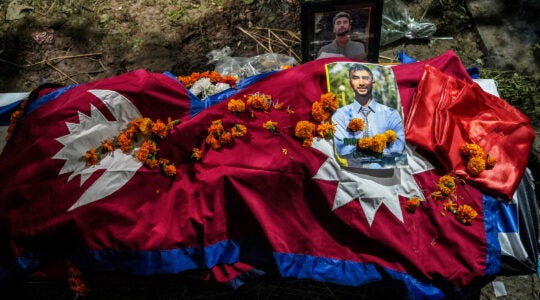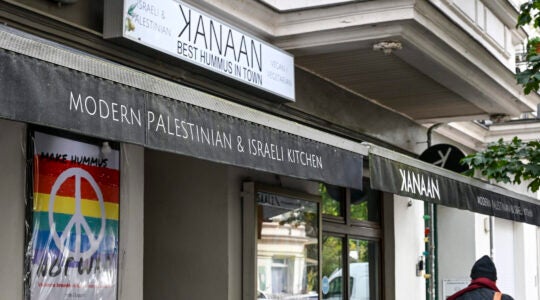We are adding to this story as it develops.
(JTA) — The impact of the coronavirus on the Jewish world is a study in contrasts.
In Israel, where the total death toll as of Tuesday was 258 and the number of new daily infections below 50, the country has significantly eased its lockdown. School has resumed for some grades, businesses have reopened, and beaches and outdoor markets are slated to reopen.
But in many large Jewish communities worldwide, the coronavirus is still wreaking a terrible toll. Among the 8 million Jews living in the Diaspora — more than Israel’s 6.7 million but less than its overall population of 9.2 million — the death toll is in the thousands and climbing.
It’s impossible to say exactly how many Jews have died of COVID-19 because governments don’t count the deaths of their Jewish citizens separately and, in most places, the Jewish community doesn’t have a full accounting of those who have lost their lives.
What’s clear is that the Jewish rate of death is exponentially higher in the Diaspora compared to Israel and that the virus is devastating the Jewish world. In many places, the infection and death rate among Jews is also far higher than the local non-Jewish population.
Here is a look at how some Jewish populations around the world are struggling with coronavirus.
Britain
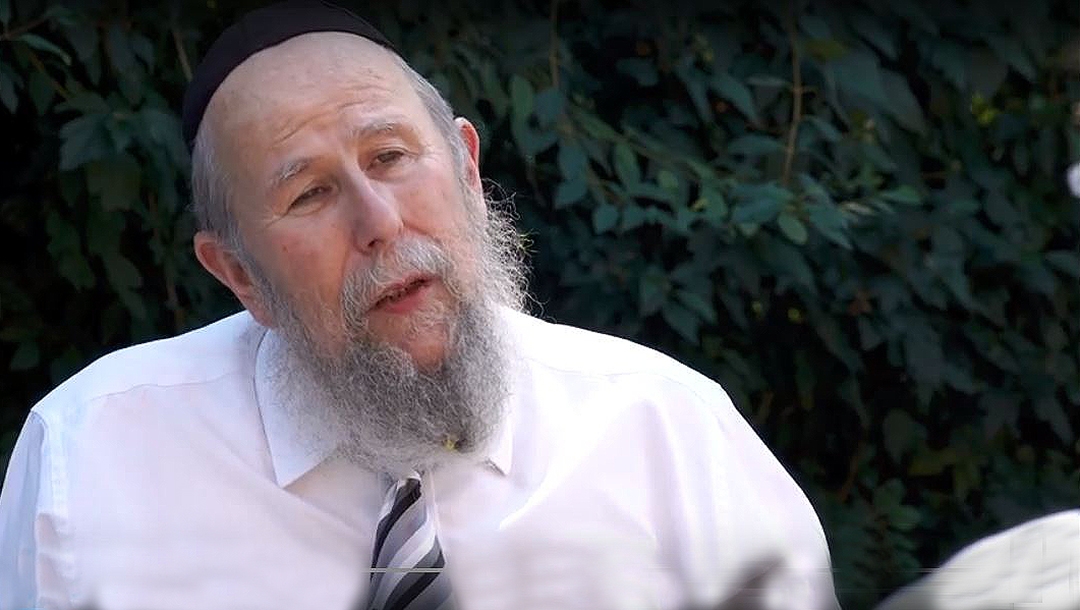
Yehuda Yaakov Refson was remembered as being “devoted, caring and principled.”(Courtesy of Chabad.org)
In Britain, at least 366 Jews have died, representing about 1.7% of all deaths in a country where Jews comprise just 0.3% of the population. There are several theories for why the Jewish death rate is nearly six times higher than that of the general population, including their disproportionate representation in the hot spot of London, their relatively advanced age and failure early on to practice social distancing in some haredi Orthodox neighborhoods.
The dead have included Avrohom Pinter, one of the most influential rabbis in North London’s haredi neighborhood of Stamford Hill and the first British rabbi to serve as a town council member; philanthropist Irving Carter; and Yehuda Yaakov Refson, the senior Chabad rabbi in the city of Leeds.
New York
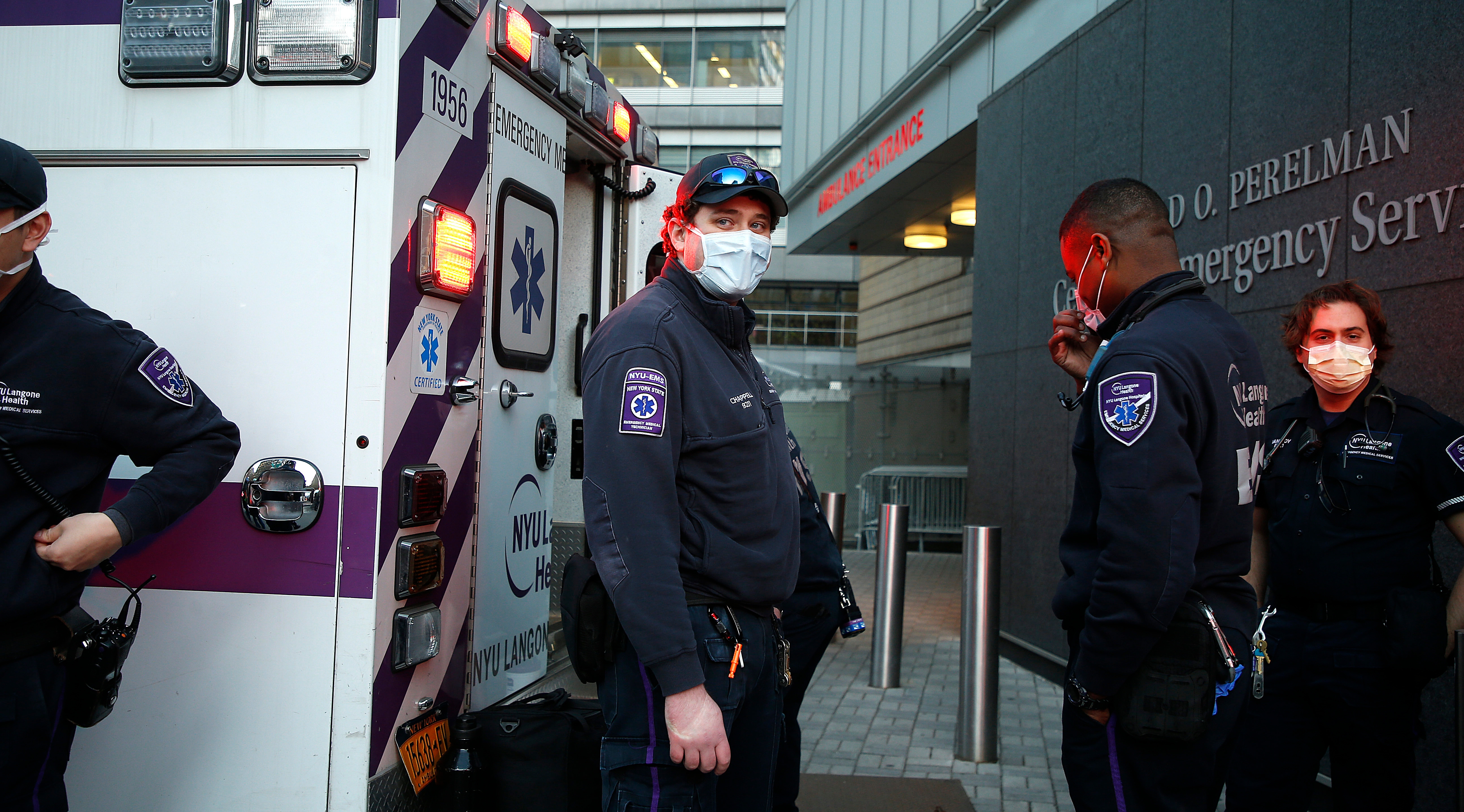
EMTs are seen outside NYU Langone Medical Center in New York as major cities in the U.S. adjust to restrictive measures during the coronavirus pandemic, April 22, 2020. (John Lamparski/Getty Images)
The New York area is home to the largest Jewish community outside Israel, with an estimated 2 million Jews including the suburbs in Northern New Jersey, Westchester and Long Island. The virus has torn a path of destruction through these communities. As far back as mid-April, the haredi media were reporting more than 700 dead in New York City alone. According to city Health Department statistics, the Zip codes with the highest coronavirus infection rates track closely with the city’s Hasidic neighborhoods: Borough Park, Williamsburg and Crown Heights, all in Brooklyn.
Meanwhile, numbers show that at-home deaths in Borough Park and Williamsburg in March and early April were more than 10 times higher than during the same period last year. Most of those deaths were likely due to the coronavirus, New York City Mayor Bill de Blasio said.
Rabbi Mayer Berger, director of operations at the Chesed Shel Emes Burial Society in Brooklyn, said the number of Jewish dead has quadrupled since the onset of the pandemic, with the society handling 500 burial rites in the month between Purim and Passover.
“It’s not in Iran and it’s not in Syria or videos from different countries where you see bodies lined up,” he told The New York Times. “This is New York.”
Some 320,000 people have tested positive for the virus in New York state and more than 19,500 have died, over 13,724 of them in New York City, home to over 1.2 million Jews.
At the Parker Jewish Institute, a Jewish nursing home on Long Island, 179 patients reportedly tested positive for the virus and at least 57 died as of mid-April. Nurses reported wearing trash bags as protective gowns (the facility denied that was the case) and reusing masks due to equipment shortages.
In New Jersey, the state with the fourth-largest Jewish population, over 128,000 have tested positive and some 8,000 have died. More than 1,200 dead are from Bergen County, home to the largest Jewish community in the state.
Elsewhere in the U.S.
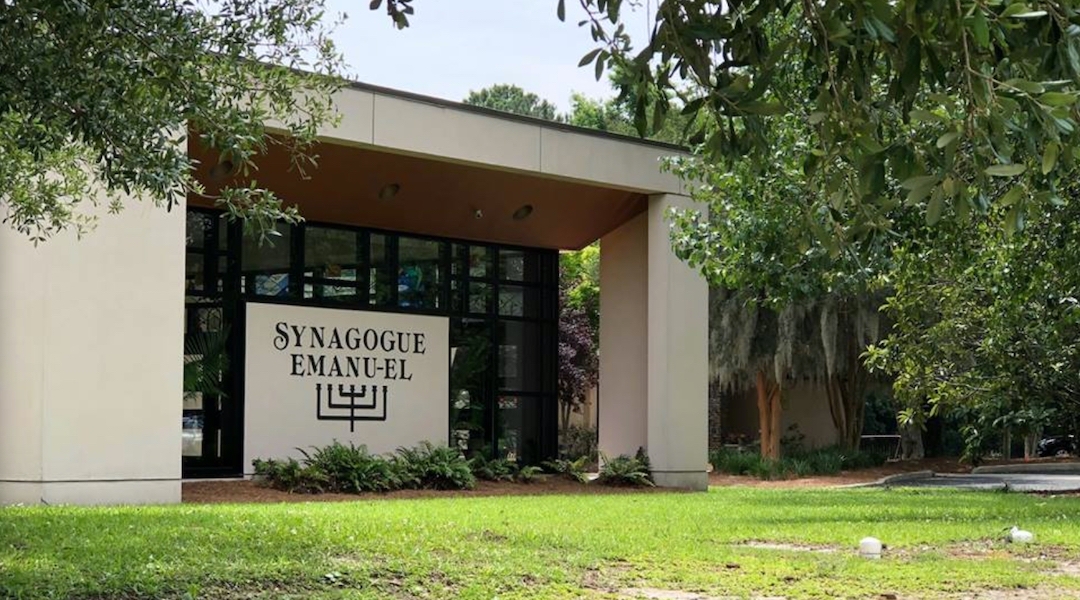
Like many other Jewish communities, Synagogue Emanu-El in Charleston, S.C., is remaining closed for the time being. (Google Street View)
The U.S. has over 1.2 million confirmed cases and 70,000 confirmed deaths from coronavirus. The carnage that began in New York and at a few other hot spots is now spreading, fueled in part by the reluctance of some governors and mayors to enforce a lockdown.
In Massachusetts, the state with the third-highest infection rate, two Jewish senior living facilities from the same network near Boston reported at least 32 coronavirus deaths in mid-April. More than half of the 430 residents tested for the virus at nursing homes in that network tested positive.
After New York, New Jersey and Massachusetts, other states with the highest virus infection rates correlate closely with where Jews live: Pennsylvania, Illinois, California, Michigan and Florida. Together, these eight states are home to about 75% of America’s 7 million or so Jews. American Jews are also disproportionately older, with 26 percent over age 65, according to a 2018 study, making them at higher risk for death if they contract COVID-19.
In some states where governors are reopening businesses, like Texas, Georgia and South Carolina, synagogues are taking a more cautious approach and listening to health authorities who advise against reopening.
Among the American Jews who have died from the coronavirus: Grammy and Emmy-winning singer-songwriter Adam Schlesinger; the Novomisker rebbe, Rabbi Yaakov Perlow; longtime Brooklyn politician Noach Dear; Stanley Chera, a real estate mogul and friend of President Donald Trump who was a pillar of the Syrian Jewish community; “Saturday Night Live” music producer Hal Willner; actor Mark Blum; and sociologist William Helmreich.
Italy

First responders wait by an ambulance in Rome’s Piazza Venezia, March 12, 2020. Italy shut down all stores except for pharmacies and food shops in a desperate bid to halt the spread of the coronavirus. (Vincenzo Pinto/AFP via Getty Images)
About three weeks after the start of Italy’s major coronavirus outbreak, the Jewish community there was hit with shocking news on March 16: Michele Sciama, a leader and former head of the Jewish community in Milan, had died of the virus.
About a dozen or so Italian Jews are known to have died of COVID-19, which has killed 29,000 Italians. The Italian Jewish community repurposed a community website to memorialize the dead and has found other ways of maintaining Jewish community online. In Milan, the community organized the delivery of food and medicine to homebound older Jews. About 20,000 Jews live in Italy, with the largest community in Rome followed by Milan and Florence.
France
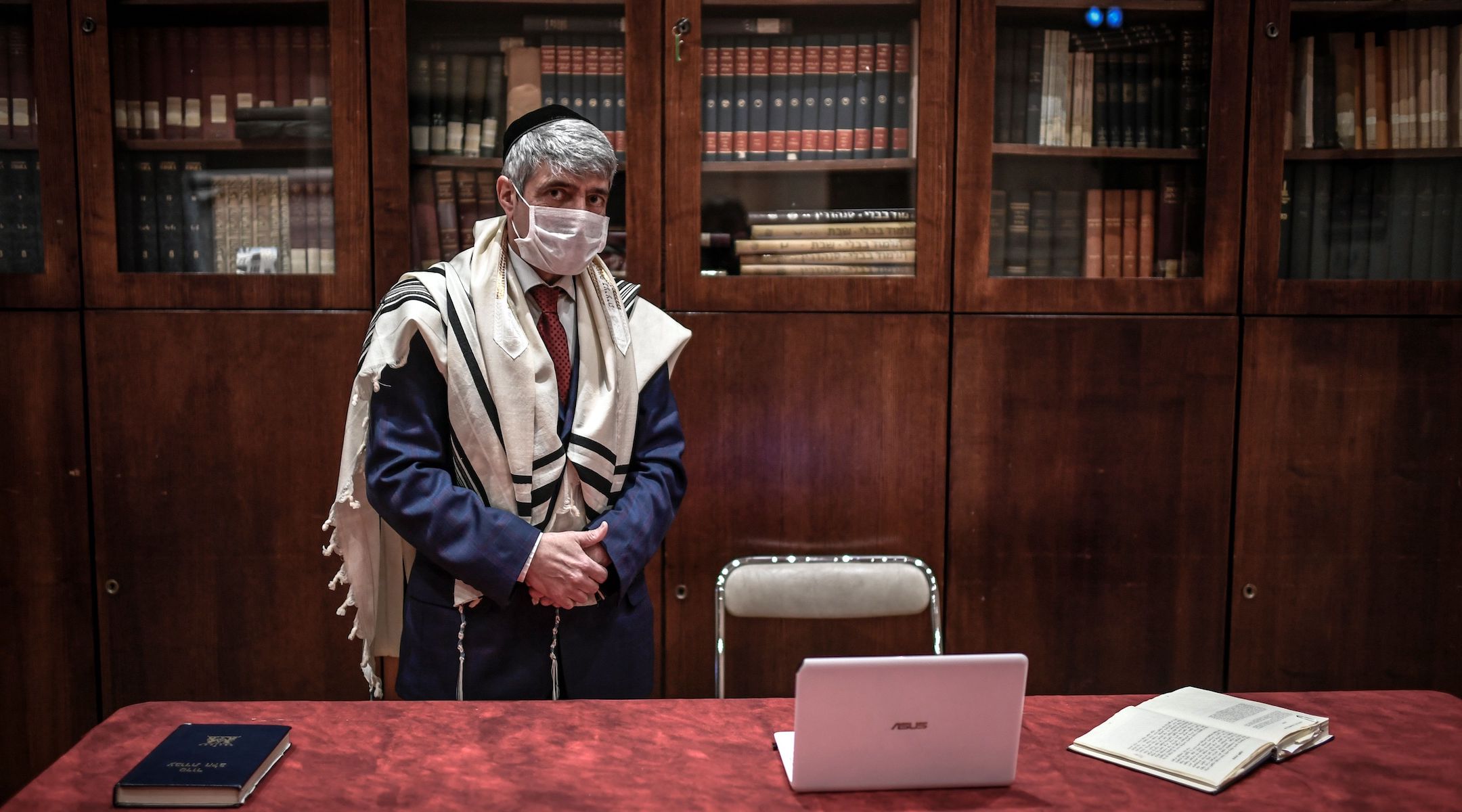
French Rabbi Philippe Haddad prepares for a Shabbat service via videoconference at the Copernic Synagogue in Paris, March 28, 2020. (Stephane de Sakutin/AFP via Getty Images)
France’s Jewish community, estimated at 500,00, is the largest in Europe. It’s not clear how many are among the country’s 25,000 coronavirus deaths, but the Jewish section of the Thiais cemetery near Paris that had been built to last for years has filled up over the past few weeks and is nearing capacity.
The French association of Jewish doctors, AMIF, told Haaretz that the Jewish infection rate appeared to be disproportionately high, possibly because Purim celebrations served as a vector for the disease and because most French Jews live in Paris or Strasbourg, where infection rates are higher than in the rest of the country.
In March, Joel Mergui, a physician and president of the Consistoire organization that runs French synagogues, Jewish schools and kosher certification, gave a tearful radio interview from a hospital ICU to Radio J, a Jewish station, urging the community to abide by social distancing. He since has been released from the hospital. Among the community’s deaths from the virus is Andre Touboul, a Chabad rabbi who led one of France’s most prestigious high schools in Paris.
Netherlands
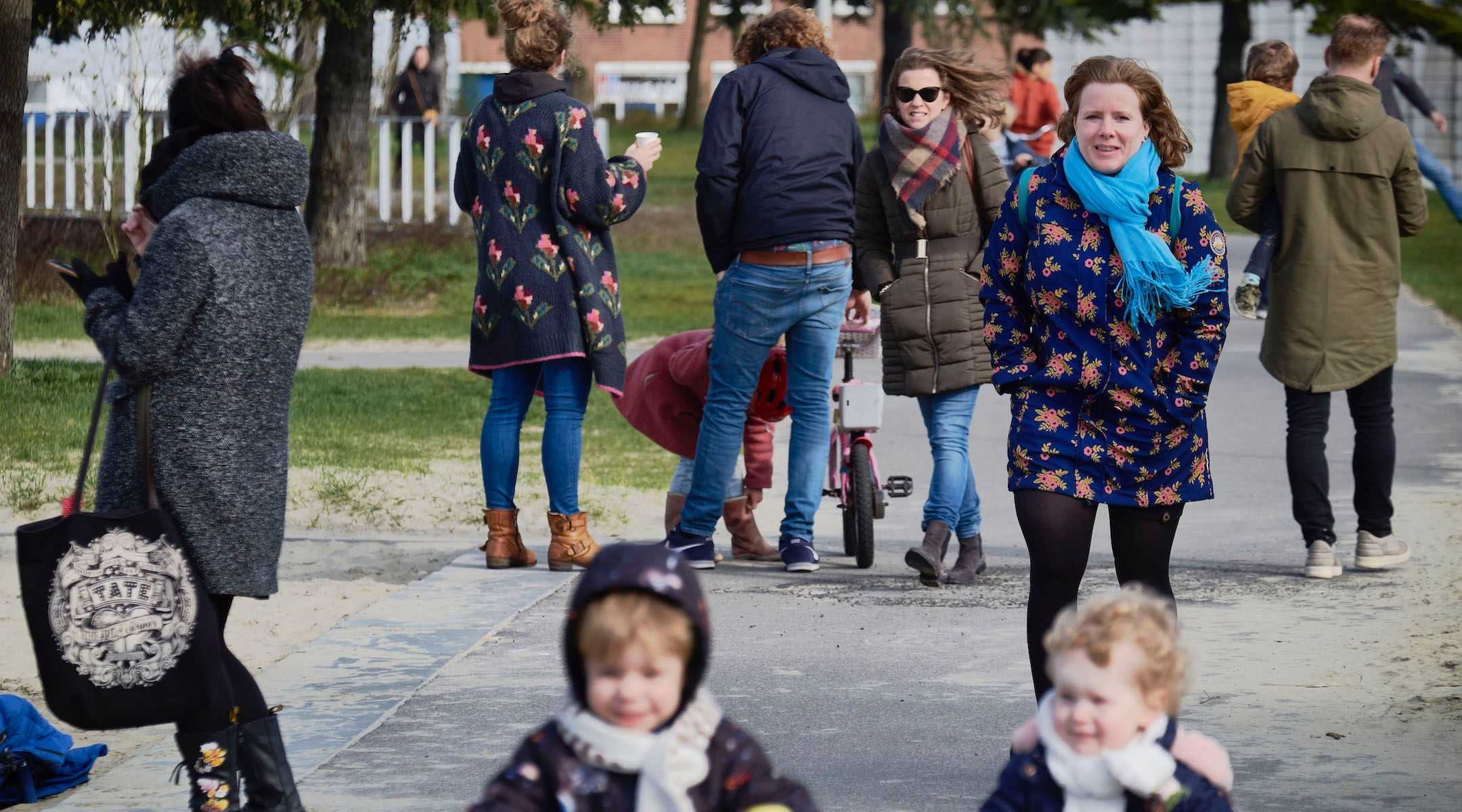
People gather in a park in The Hague in the Netherlands, March 17, 2020 as Dutch Prime Minister Mark Rutte announced in a televised speech that the country will pursue a herd immunity plan in the wake of the coronavirus outbreak. (Pierre Crom/Getty Images)
Unlike the rest of Europe, the Netherlands never ordered a coronavirus lockdown. A Jewish old-age home in Amsterdam, Beth Shalom, which has its own synagogue, community center and adjacent independent-living residence, took a similar approach. It stuck to its open-door policy until March 20, even as the country’s infection rate began climbing. As a result, it became the worst-hit Jewish institution, reporting 26 deaths to date out of a population of 120.
Now Beth Shalom is in lockdown, with many residents confined to their rooms. To help alleviate their loneliness, a Dutch-based company owned by an Israeli-Dutch businessperson sent a crane to the facility to lift family members to residents’ windows so they could visit without compromising safety.
About 40,000 Jews live in the Netherlands in a population of 17 million. The country has more than 4,500 reported deaths in total.
Belgium
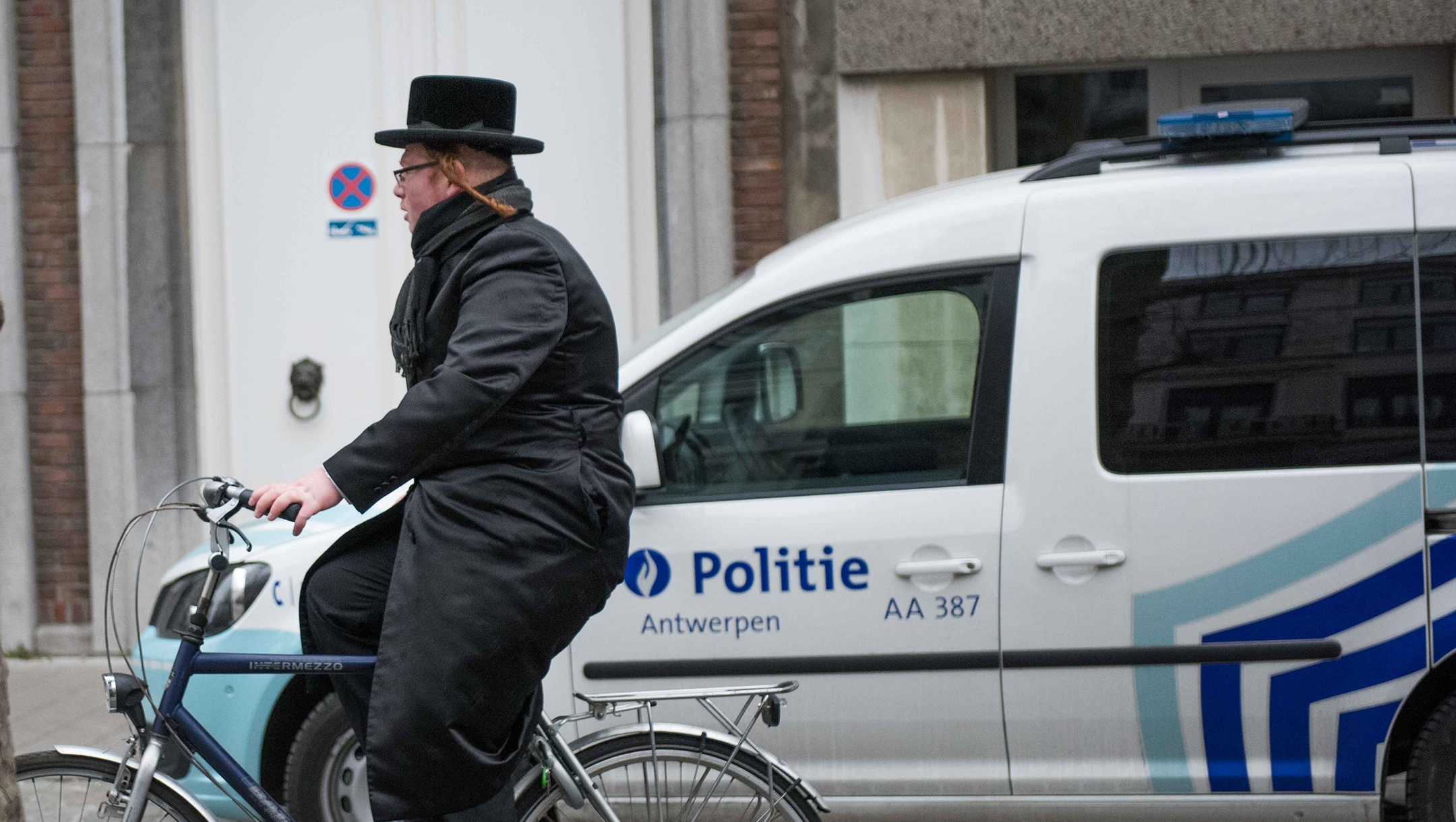
A haredi Jew cycling past a police car in Antwerp, Belgium on March 16, 2016. (Cnaan Liphshiz)
The Jewish community of Belgium numbers around 40,000 people, equally-divided between Antwerp and Brussels. They braced for a massive outbreak in its midst of COVID-19 in March — particularly the Antwerp community, which is predominantly Orthodox. The were prepared to see an infection rate of up to 85% of its members, which was then at least 20% higher than the projected national rate. The community’s projections also spoke of hundreds of dead.
Many Belgian Jews did contract the virus, according to Martin Rosenblum, an Antwerp-based physician with many haredi Orthodox patients, though there is no way of knowing the exact infection rate in their community, he said.
Still, the death rate has been low, with about 15 Jewish fatalities in Antwerp so far, according to Michael Freilich, a Belgian-Jewish lawmaker from Antwerp. “It seems to be under control,” he said.
RELATED: In some European Jewish communities, getting the coronavirus carries a stigma
The situation could be a testament to the unanimous decision of the city’s rabbis and community emergency services to impress upon members the importance of social distancing and observing the government’s emergency measures.
The low death rate among Jews in Belgium is further surprising given that it’s Europe’s worst-hit country, in terms of deaths per million residents. Its current rate of 701 deaths per million residents is more than three times the United States’ ratio. A nation of 11 million people, Belgium has seen more than 8,000 deaths from the disease since January.
The Belgian government has attributed the high ratio to its method of counting cases, which includes deaths registered at home before an exact cause of death is determined.
Russia, Ukraine and Poland
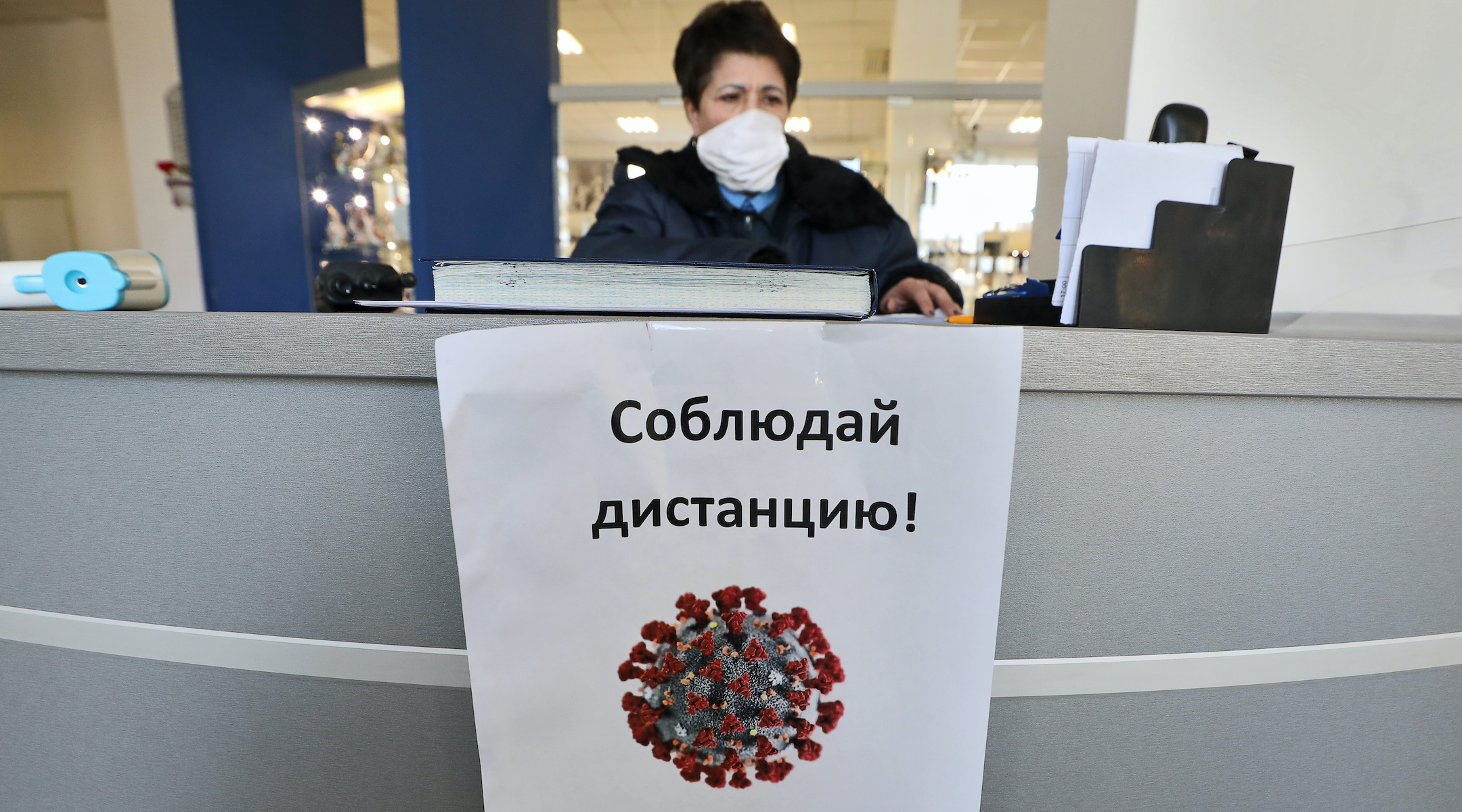
An employee in a face mask at a factory in St. Petersburg, Russia, May 6, 2020. (Alexander DemianchukTASS via Getty Images)
These Eastern Bloc countries, which have between them more than 500,000 Jews, have not been hit as hard as Western European nations — at least not yet.
In Russia, a nation of 145 million, some 1,500 people have been recorded as having died from the virus, constituting a ratio of about 10 deaths per million inhabitants. The ratio in Ukraine, which has 41 million inhabitants, is even lower, standing at around seven deaths per million.
Registration, recording and classification issues may have something to do with the statistics. These countries also receive far fewer international tourists than their Western counterparts.
Whatever the reason, the low death and infection rate seems to apply to the countries’ Jews, especially their older population, who are most vulnerable.
The virus has killed only three of the 28,000-odd elderly Jews who receive home care from the American Jewish Joint Distribution Committee in the former Soviet Union, that organization’s executive director for the region, Michal Frank, told the Jewish Telegraphic Agency. Nine of these recipients have been diagnosed with the virus along with four JDC employees, she added.
“It’s a reflection of how JDC was ahead of the curve, employing protective gear and social distancing before it became required in those countries,” she said.
Morocco

Members of Morocco’s Jewish community kiss Torah scrolls at Simchat Torah at the Great Synagogue of Casablanca, Oct. 5, 2007. (Abdelhak Senna/AFP via Getty Images)
Though home to just 1,500-2,000 Jews among a population of 36 million, the community has lost a staggering 1% of its population — at least 15 deaths — after a wedding in the city of Agadir reportedly served as a vector for infection. Among the dead are two relatives of Israeli Labor Party leader Amir Peretz. Morocco’s total death rate is 180.
Argentina
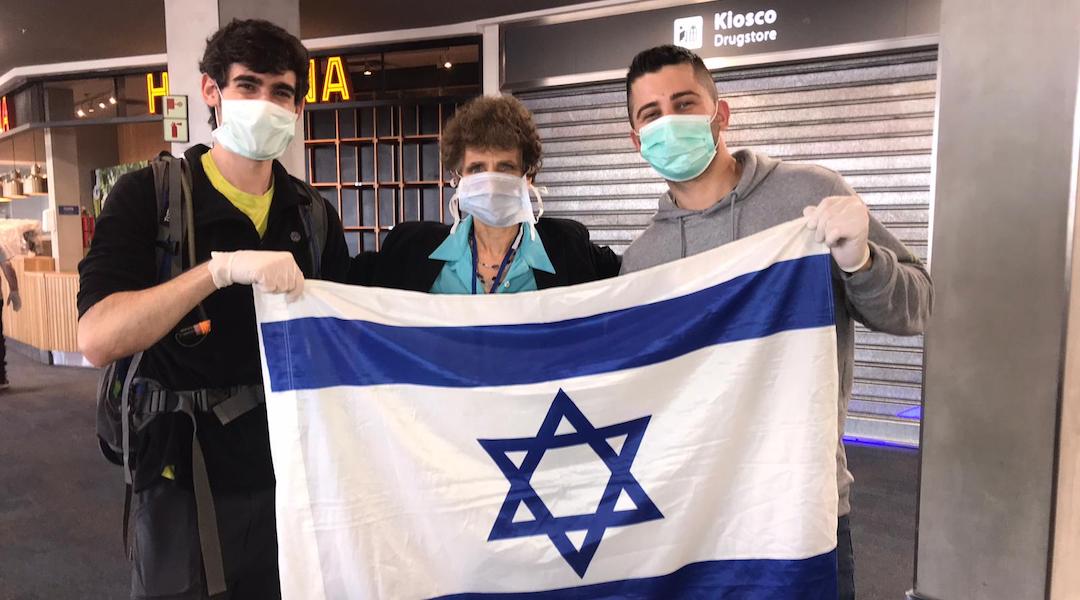
Galit Ronen, center, Israel’s ambassador to Argentina, at the Ezeiza International Airport in Buenos Aires with two passengers of the emergency flight to Israel, April 19, 2020. (Courtesy of the Israeli Embassy in Argentina)
About 10 Jews have died from the coronavirus in Argentina out of a national death toll of about 260. With some 200,000 Jews, Argentina is home to the largest Jewish community in Latin America. Most live in Buenos Aires, which is also the country’s COVID-19 epicenter. The country of 40 million has been on lockdown since March 20, helping keep the national infection rate relatively low.
Brazil
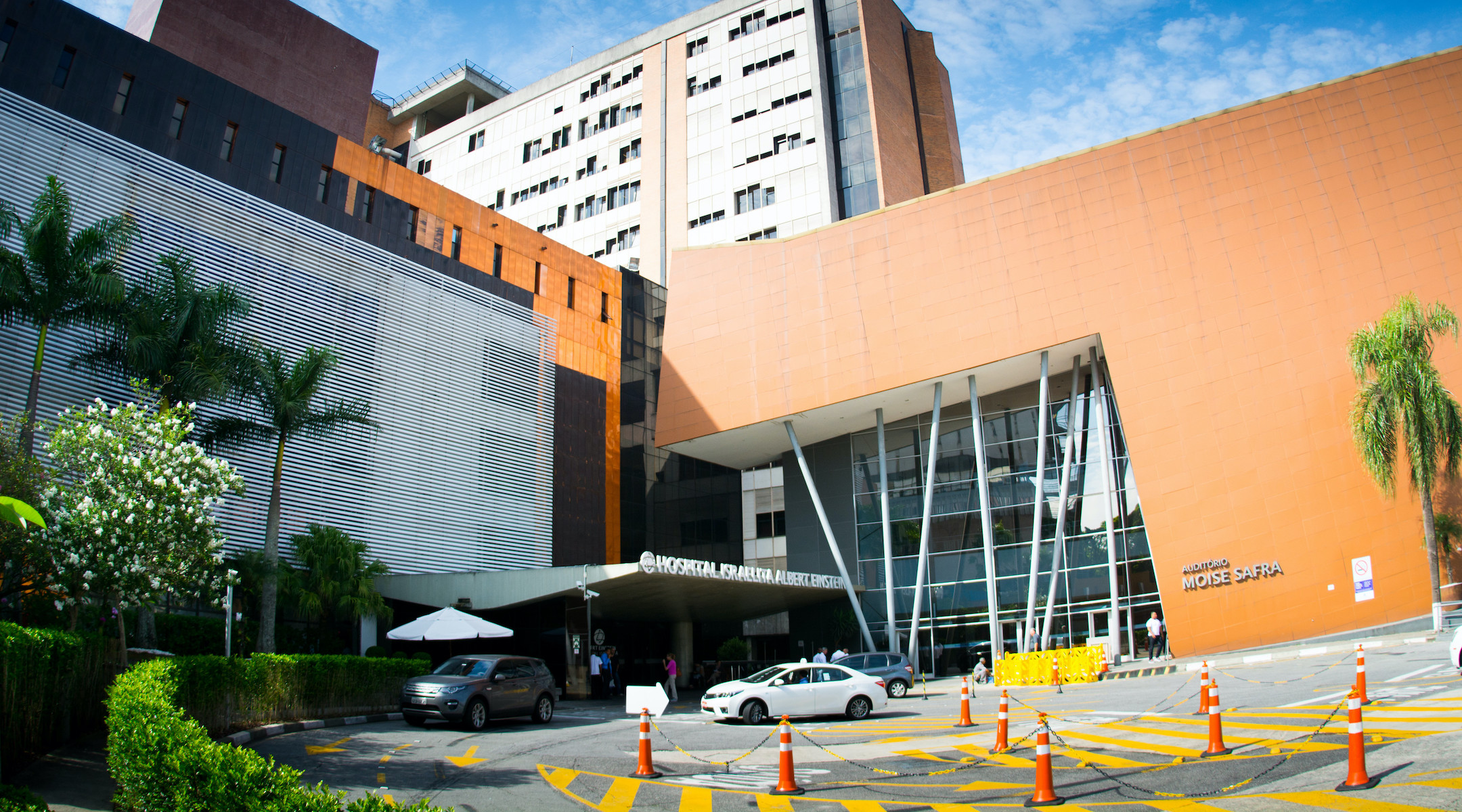
The Albert Einstein Israelite Hospital in Sao Paulo, Brazil, treated the continent’s first COVID-19 patient. (Courtesy of Albert Einstein Israelite Hospital)
Latin America’s first COVID-19 patient was quarantined in the Albert Einstein Israelite Hospital, one of Brazil’s most robust Jewish-affiliated institutions. As of May 5, Brazilian Israelite Confederation said that 67 Jews are among the country’s nearly 7,300 deaths. The country of 215 million people passed 100,000 confirmed cases this past weekend.
Brazil is home to Latin America’s second-largest Jewish community with some 120,000 Jews, according to the Confederation. Jewish day schools were all closed in early March and all other Jewish institutions followed suit. Both the Sao Paulo and Rio de Janeiro Jewish federations have established crisis committees to support Jewish families.
During the same period, Rio’s chief Chabad-Lubavitch envoy, Rabbi Yehoshua Goldman, released an official memo stating that “panic and desperation are not Jewish,” outlining rules the community should follow, starting with “No kissing, no hugging, no holding hands with one another.”
Altamiro Zimerfogel, who presided over the Brazilian Israelite Club for nearly a decade, and Daniel Azulay, one of Brazil’s most prominent children’s artists and educators, were among the Jewish casualties.
Mexico
The 50,000 strong Jewish community of Mexico is mostly located in Mexico City, with smaller active communities in the cities of Guadalajara and Monterrey. In Mexico, members of the Jewish community were among the first citizens to be infected. A small group of Jews (specific number unknown) were passengers on a flight from Boulder, Colorado, which gained nationwide media coverage as being one of the first to import cases.
Mexico City’s hyper-institutionalized and segregated community is divided into sub-communities of Jews coming from Syria, as well as into separate subsets of Sephardic and Ashkenazi Jews. These sub-communities are efficiently organized under the Central Committee, an inter-communal umbrella organism that acts in cases of emergency. According to Mauricio Lulka, President of the Central Committee, this organization postponed all communal events since March 12, and Jewish schools have been closed since March 16. This was two weeks before an official national quarantine was declared.
The community’s draconian measures have kept the infection rate relatively low. According to Tribuna Israelita, the internal communications organ of the Mexican Jewish Community, as of May 11, there have been a total of 191 infections. Of those, 114 have recuperated, 81 are active (20 have been hospitalized) and 2 have died.
Cnaan Liphshiz, Marcus M. Gilban and Alan Grabinsky contributed reporting.
JTA has documented Jewish history in real-time for over a century. Keep our journalism strong by joining us in supporting independent, award-winning reporting.
